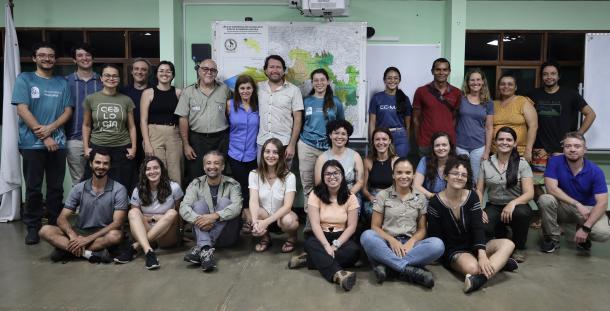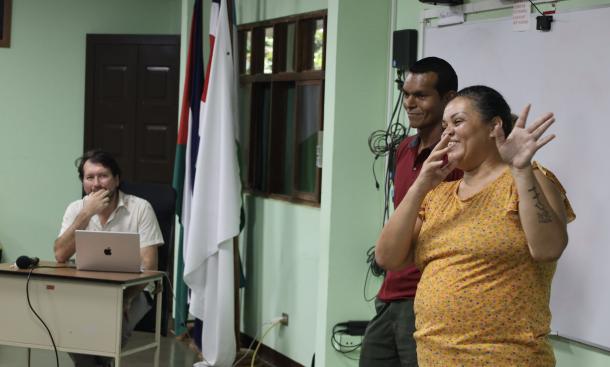
The BioMar team in Sector Santa Rosa of ACG. Photo by Melissa Espinoza.
The second BioMar mini symposium was held in early November in Área de Conservación Guanacaste. The event, held every two years, offers an opportunity for students and professors from the Centro de Investigación en Ciencias del Mar y Limnología (CIMAR) at the Universidad de Costa Rica, who are working on the joint GDFCF/ACG/CIMAR marine bioinventory project, BioMar, to share their work with ACG, other students and researchers, the marine parataxonomists, and community members who live where BioMar works.
Attendees heard presentations on marine worms, nematodes, hydroids, plankton, bacteria, marine slugs, fish parasites, Rhodoliths (colorful, unattached coral-like nodules that produce energy via photosynthesis), octocoral, fish, and macroalgae. Increasingly, the project is focused on identifying the smallest organisms that live in this region of the Eastern Tropical Pacific Ocean – the organisms on which so much of the charismatic megafauna, like sharks, whales, and sea turtles, depend (not to mention humans). For example, if phytoplankton were to suddenly disappear, it would lead to a complete collapse of the aquatic ecosystem, which would result in a significant decrease in atmospheric oxygen levels, would further accelerate climate change, and would be devastating to marine and human life.
The BioMar students and researchers are accelerating our understanding of the marine aquatic ecosystem and, along the way, are discovering new species records for Costa Rica, as well as new species altogether. As GDFCF Founder and President Dr. Dan Janzen says, we have to understand and come to know our biodiversity, so we can understand how to protect it. We are pleased to support the work of BioMar and are grateful to the Wege Foundation, the Wallace Genetic Foundation, and the New England Biolabs Foundation for their funding of this critical work.

Marine parataxonomists Gilberth Ampié and Yelba Vega speak about their work; Dr. Jeffrey Sibaja-Cordero, a BioMar co-director, looks on.